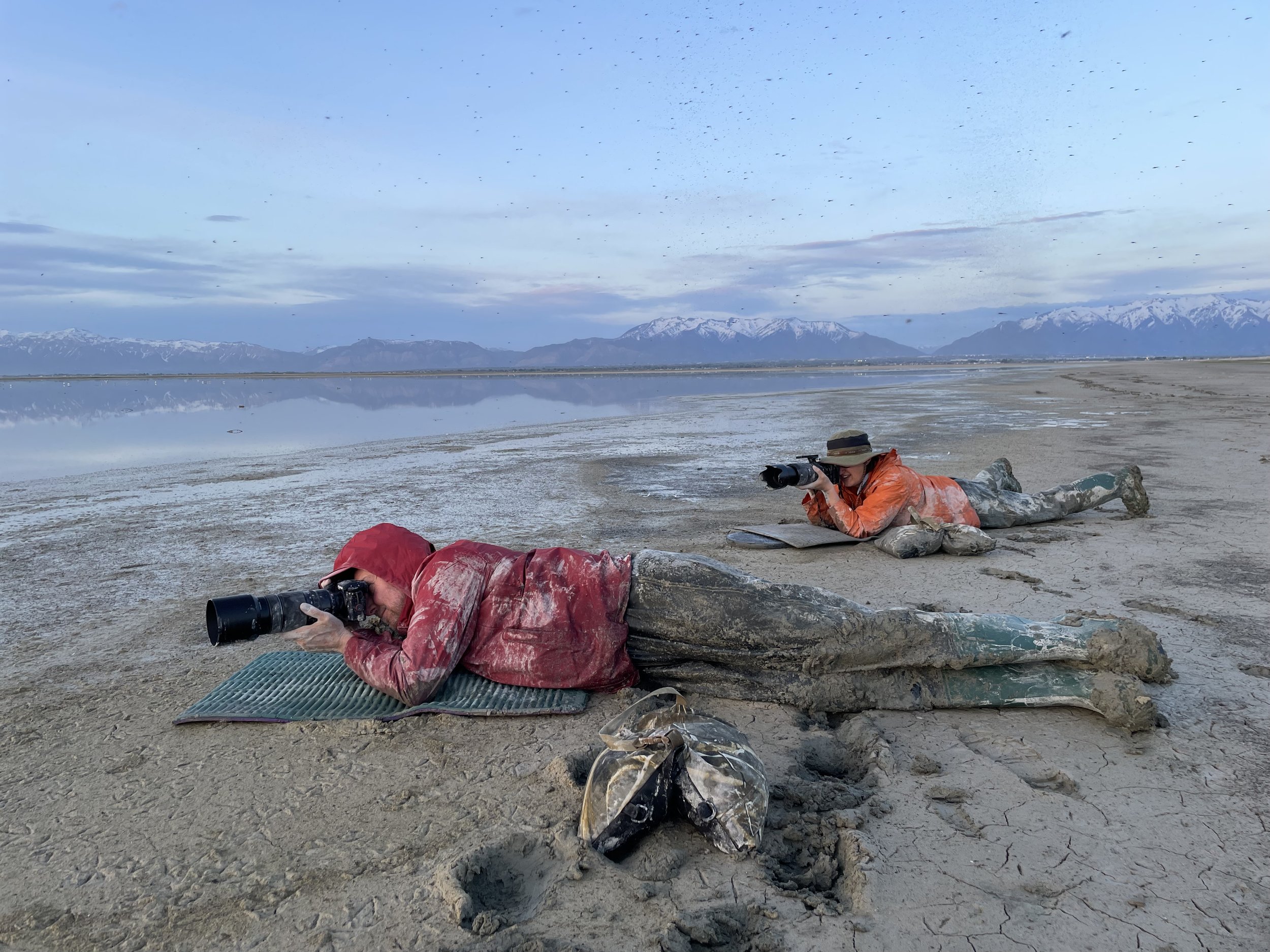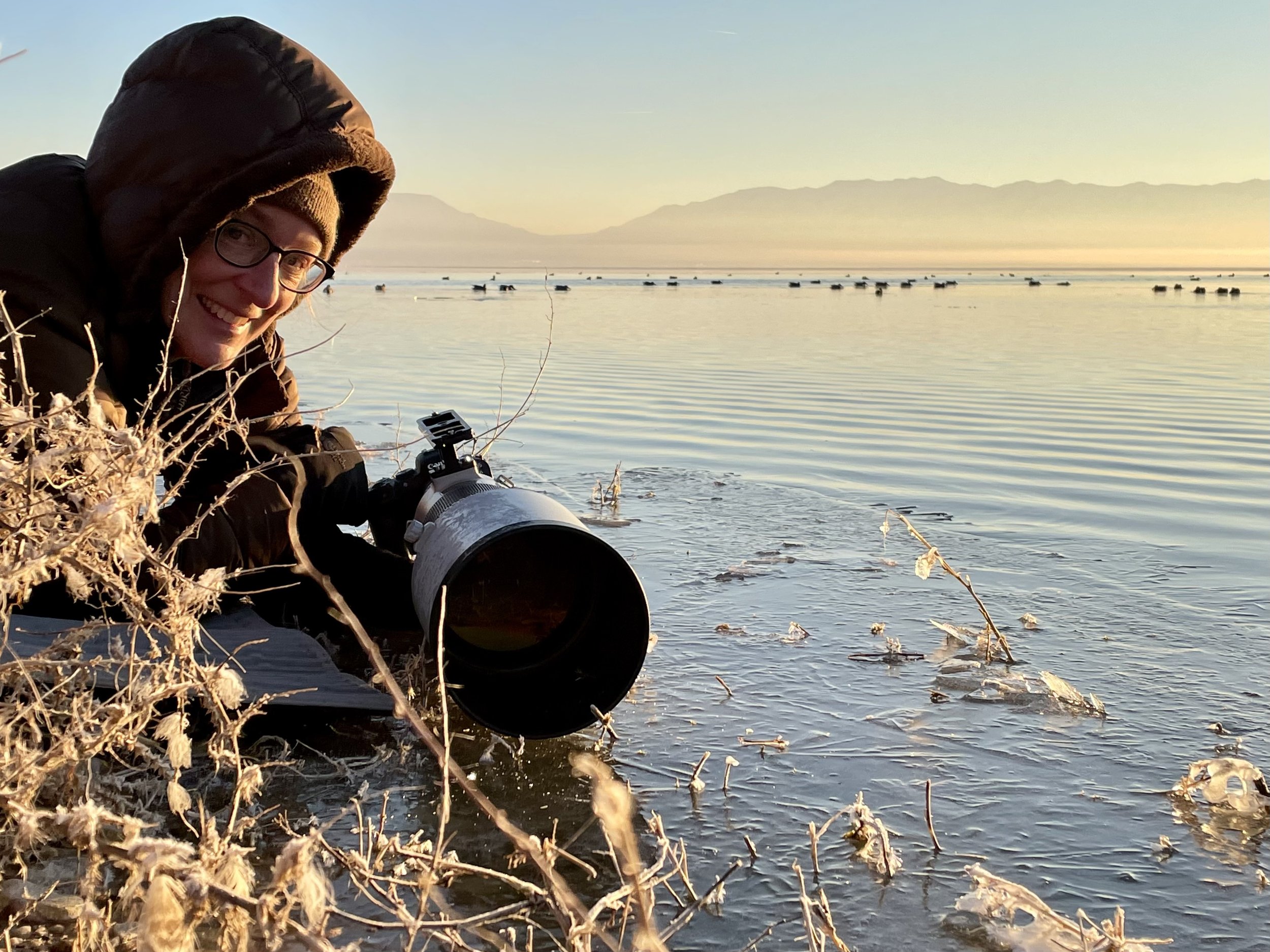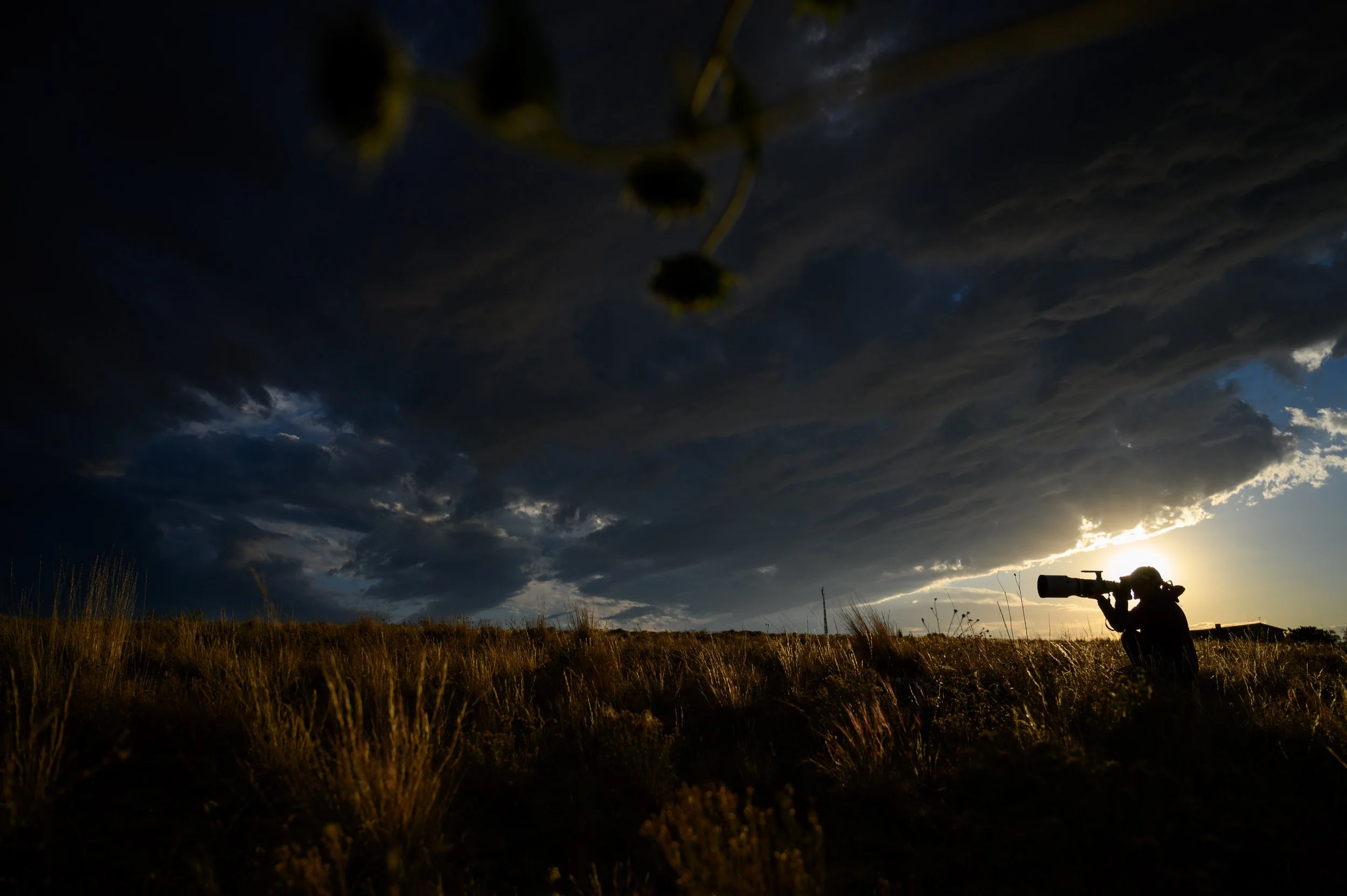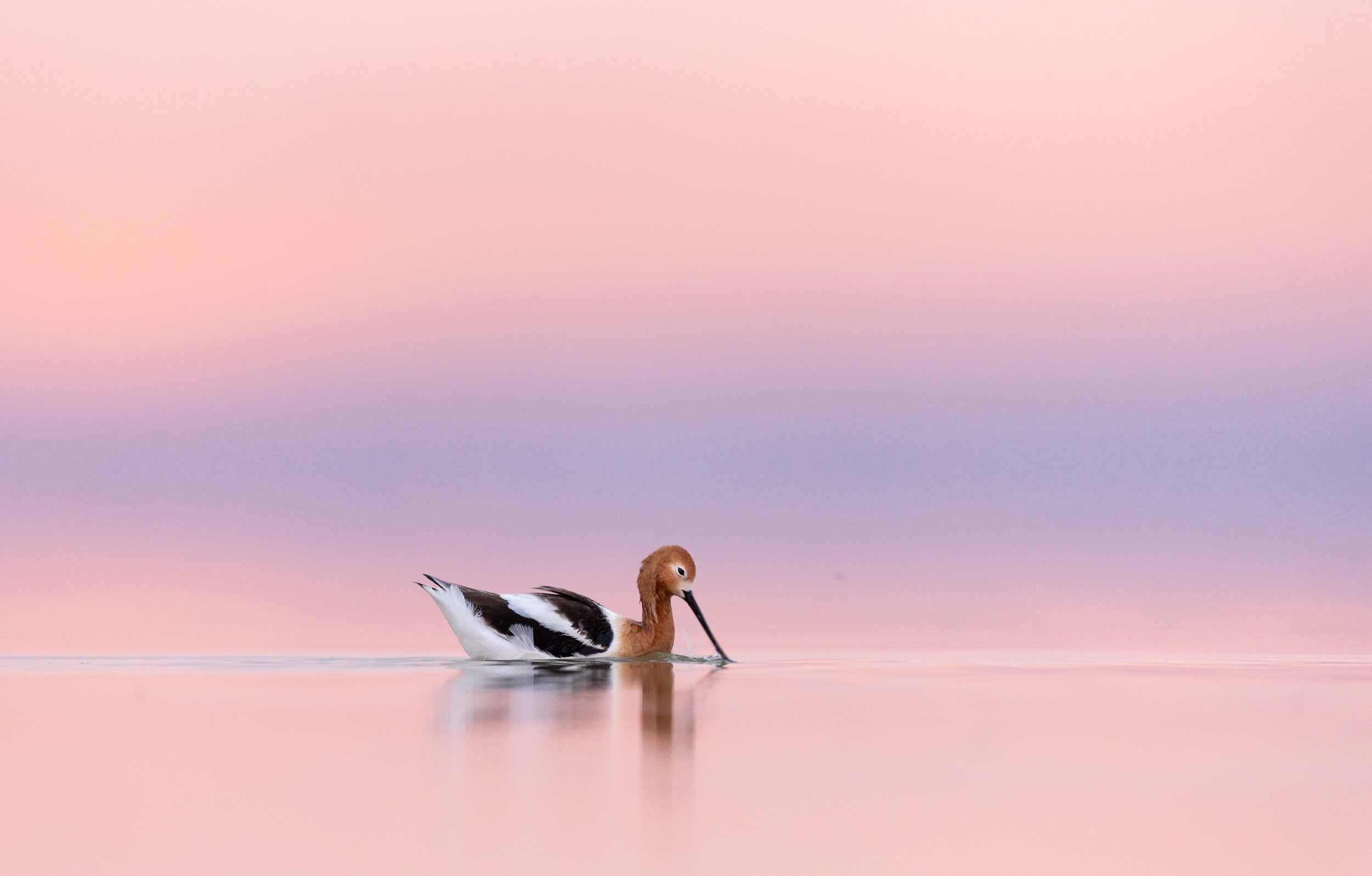Gear
Suggested camera gear
Camera and telephoto lens. I recommend at least 400mm.
Which lenses? Most of my photos are taken with a 500mm f/4 prime lens. It definitely has an advantage in low light, which I shoot in a lot. However, 500mm can be too close for scenic shots, so the zoom lens is sometimes better. You can bring either or both. You can also bring a wide-angle lens for landscape photography in case the birds don’t cooperate, but landscapes will not be our primary goal.
Something to support your camera at water level and keep it out of the mud. I use a few different things, including beanbag, groundpod, tripod, foam pad, and foam board. I will have loaner foam pads and there’s a Walmart nearby if we need to grab something.
Monopod and/or tripod. A tripod or monopod could be useful if we end up photographing critters away from the water. Some people like to use a tripod that can drop to ground level for shooting in shallow water or deeper mud - your choice.
Rain cover for your camera in case of bad weather
Extra memory cards and batteries
Suggested clothing for April: Be prepared for mud! The average high is 62 F, and the average low is 44 F. It probably won’t get hot and it probably won’t dip far below freezing, but it could be cold and wet, with snowstorms possible throughout the month. I recommend insulation under your outer layers and you might need a warm hat and gloves as well. A waterproof outer layer is essential in April if you want to avoid a freezing and miserable Great Salt Lake Experience! After shooting in the mud, we’ll strip off the muddy layers before getting in the cars. I’ll have a couple of big plastic tubs to carry the muddy stuff until we can get to a hose for rinsing.
If the weather is warm, you still need to be waterproof, and there will be bugs. Here’s a list:
Muck boots
Waterproof outer layer for shooting in the mud. You have three options here:
Option 1. Wear rain pants and a rain jacket over your clothes, plus muck boots. In this outfit, you will probably still get wet, but at least you can peel off the muddy layers before you get in the car. Bring dry clothes to change. This is a bad option if you get cold easily.
Option 2. Lightweight chest waders plus a rain jacket over the top. I strongly recommend this option in spring when it’s cold and the mud can be deep and soupy. Rain gear just doesn’t cut it in those conditions. If you don’t have chest waders, you can purchase a cheap pair on Amazon or Walmart for about $50 - $100. See below for more advice on chest waders.
Option 3. Dry suit or a semi-dry suit. Don’t go out and buy one, but if you already have a dry or semi-dry suit that you’re comfortable shooting in, that could be your best option.Long sleeved shirts and pants to wear under the chest waders or rain gear
Warm jacket, warm layers for under your waders
Gloves. Lightweight gloves with the fingertips cut off are usually adequate for spring weather.
Standard hiking shoes and clothes for shooting in grass and brush
Dry clothes and shoes for the car after the photography session
Head net for gnats (May and June) and bug spray
Hat for sun protection (can also be helpful when shooting in backlight)
What to expect
What we will do: On a typical evening session, I might start out shooting up in the sagebrush and grass in some standard hiking-type clothes and shoes for an hour or so, and then head to the water for sunset and shorebirds. Once I get to the water, I usually layer on chest waders or other waterproof gear. If you aspire to take the type of low angle shots that I usually prefer, you should be prepared to lay down in the mud. Some flexible people can crouch or bend low enough from a sitting position, but for me it’s just easier to embrace the mud and lay down. Also, shorebirds will more often walk right up to you if you’re laying down!
Even if the temps are nice and I don’t mind getting wet, I still wear waterproof gear because the super salty mud can irritate the skin and there aren’t great options for rinsing off afterward. Plus, it’s worth it just for the extra protection against mosquitos, spiders, and gnats.
Notes on ground-level shooting: Most often while laying in the mud, I switch between hand-holding and setting my camera on a foam mat (like a yoga mat) or foam board (like a swimming pool kickboard). I also bring a ThermaSeat (essentially a beanbag filled with foam chunks) to rest my camera on, and also to rest my head on when my neck gets tired. That’s it! When the mud is serious, less is more and extra stuff is more of a burden than a help. If you don’t have these things, I have extra that you can borrow.
If you use a beanbag, fill it with something that can be rinsed and dried (like packing peanuts or chunks of closed-cell foam) - not beans or birdseed, which get wet, heavy, and gross immediately. An inflatable camping pillow or dry bag can substitute for a bean bag and travels well. Whatever you use, it should be able to get muddy and soaked and rinse off easily. If you haven’t done it before, just be aware that ground level shooting can be uncomfortable, and I recommend trying your system out on the grass first. Figure out how you will set up and move around without putting your hands in the mud. You might practice using a flip-out screen instead of the viewfinder - this can reduce neck and eye strain.
Also - Great Salt Lake water and mud is highly corrosive. After two years of shooting with a Wimberley gimbal head on a groundpod, my gimbal head seized up and I sent it in to get rebuilt. Wimberley said it was the most severe corrosion they had ever seen. Was it worth it? For me, yes! But it’s entirely up to you how comfortable you are with risking your gear.
*Mud update (TBD):
Weather
On chest waders…
There are different types of chest waders and different materials to consider. Note that the cheapest ones will last only for a short time - the seams tend to split and they leak. The nicer ones can be a big investment and they are only worth it if you think you’ll be shooting in the mud and water a lot.
Attached boot: These have a rubber boot attached to the wader. This is probably what you’ll want if you aren’t sure how much you’ll use them. They come in either nylon (thin) or neoprene material. Neoprene is warmer for cold weather, but it’s bulky and too hot for warm weather.
Pros:
You don’t need to buy separate boots.
They are cheap and easy to find (Walmart or Amazon).
They are easy to hose down and dry fast
If you don’t like them, you can leave them with me for loaners!
Cons:
They’re big and baggy, one-size fits all. If you’re very tall or very small, they might not work.
The boots can slip around or get sucked off your feet in heavy mud.
They’re not good for walking long distance
They tend to be heavy and bulky
Several of my GSL workshop participants found these to be adequate:
https://www.amazon.com/gp/product/B07J4VGT8C/ref=ox_sc_act_title_1?smid=A107MN0U086QL1&th=1&psc=1
If you want to buy these and have them shipped directly to my house, let me know! But don’t wait until the last minute - they have occasionally been backordered.
Separate boot: These are usually nylon with a waterproof stocking foot, and you wear lace-up wading boots over the top. Wading boots can have either a felt sole or a hard rubber sole. I prefer the hard rubber sole - better for mud and hiking. These are a bigger investment but are probably what you’ll eventually want if you walk any distance or shoot in wet places often.
Pros:
You get comfortable lace-up boots that won’t slip or get sucked off your feet in the mud
The boots can be used over other sets of waders, wading socks, etc
More comfortable and better fit (if they do actually fit!)
Lighter and less bulky
They can last a long time
Cons:
Usually expensive
You need a separate pair of wading boots (not muck boots)
Fit can be tricky, especially the boot/wader combo
They’re not as easy to clean up
If you go with this option, try on the waders and the boots before you bring them to GSL. People are universally bummed out when they break these out for a workshop, only to find they can’t get the waders over their hips, or get an atomic wedgie when they tie their boots, or can’t get the boots on, or need two people to pull the boots off. True stories, all.
This is what I personally have:
Waders: https://www.simmsfishing.com/collections/womens-waders/products/ws-tributary-stockingfoot
Boots: https://www.simmsfishing.com/collections/womens-wading-boots/products/womens-flyweight-boot
What to expect for weather:
April: Be prepared for cool, possibly blustery weather. The average high is 62 F, and the average low is 44 F. It probably won’t get hot and it probably won’t dip too far below freezing, but it could be cold and wet, with snowstorms possible throughout the month. I recommend insulation under your outer layers and you might need a warm hat and gloves as well. Waterproofness is important in April.
May: The average high is 71 F and the average low is 52 F. Temperatures are usually comfortable, but it could rain, and be prepared for bugs! You will want full sleeves and bug spray. Did I mention bugs? Once the biting gnats come out in mid-May, you will need a fine mesh head net too - the gnats are not deterred by DEET.
June: The average high is 86 F and the average low is 60 F. Temps are starting to get hot, but I still recommend full coverage clothing and hat for protection from insects, mud, and sun. Even if the water is warm, I still recommend wearing waders or rain gear to stay dry since the mud and water can be irritating to your skin.
July: The average high is 94 F and the average low is 69 F. Many days are over 100 F, and it’s usually sweltering until after sunset. There can be good birds at Great Salt Lake in July, but it might be more fun to go hang out in the mountains.
August: The average high is 92 F and the average low is 67 F. Temps are still hot, but start to cool off in the last half of the month, and fall migration is on!! The mud is less soupy and sometimes covered in brine flies, which is fun. I still recommend full coverage clothing for protection from mud and mosquitos.
September: The average high is 82 F and the average low is 57 F. Temperatures are often pleasant in September (the mosquitos agree!) but can swing from hot and summery to cold and blustery, so be prepared with versatile clothing options. The shoreline mud is generally pretty firm. Fall migration is still happening, with a good mix of shorebirds and waterfowl.






